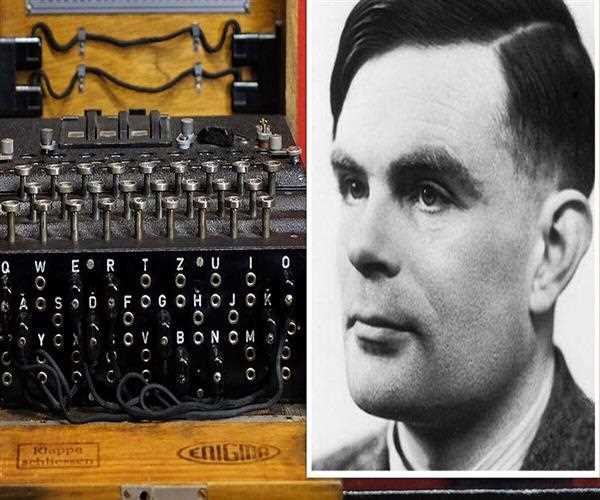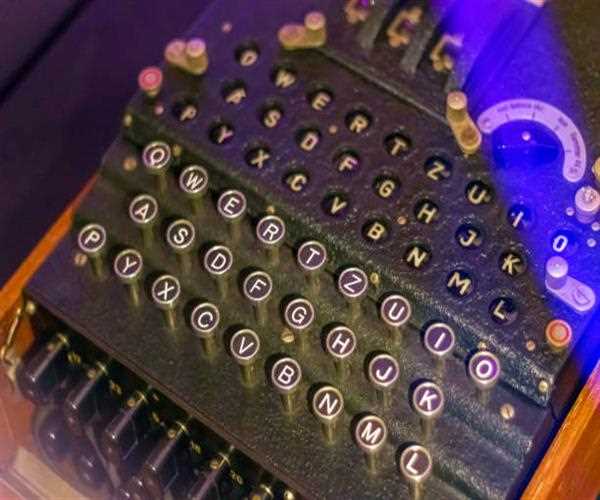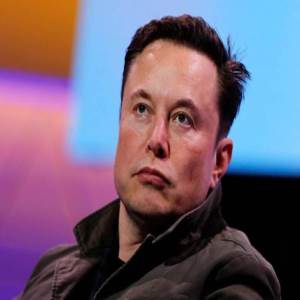Search here

06-Jul-2023 , Updated on 7/6/2023 9:30:16 PM
Alan Turing: The Mastermind Behind Cracking the Enigma Code during World War II
Highlights
- Alan Turing was a British mathematician, logician, and computer scientist.
- He played a crucial role in cracking the Enigma code used by the Germans during World War II.
- Enigma was a complex encryption machine that the Germans used to encrypt their military communications.
- Turing joined the Government Code and Cypher School at Bletchley Park, a British codebreaking center, in 1939.
- He worked on developing machines called "bombe" that could help decrypt Enigma messages.
- The bombe machines used mathematical algorithms and logic to analyze encrypted messages and find possible settings for the Enigma machine.
- Turing made significant contributions to the design and operation of the bombe, which greatly increased the codebreaking efforts.
In the annals of history, there are few figures whose contributions have been as groundbreaking and consequential as Alan Turing. This brilliant mathematician, logician, and cryptanalyst played a pivotal role during World War II by cracking the Enigma code, a feat that changed the course of the war and laid the foundation for modern computing. Turing's remarkable intellect and his relentless pursuit of knowledge were instrumental in decrypting the seemingly impenetrable Enigma machine, developed by the Nazis for secure communications.
This view delves into the life and achievements of Alan Turing, highlighting his invaluable contribution to the Allied victory and his enduring legacy.

Early Life and Education
Alan Mathison Turing was born on June 23, 1912, in London, England. From a young age, Turing displayed exceptional intellectual abilities, with a keen interest in mathematics and science. He attended Sherborne School and later enrolled at King's College, Cambridge, in 1931, where he studied mathematics. Turing's academic prowess became evident during his time at Cambridge, where he delved into a wide range of topics, including mathematical logic and probability theory.
Code-Breaking at Bletchley Park
When World War II erupted, Turing's exceptional skills caught the attention of the British intelligence agency, Government Code, and Cypher School (GC&CS). In 1939, he was recruited and soon found himself at Bletchley Park, the top-secret facility dedicated to breaking enemy codes and ciphers. Turing's role at Bletchley Park was instrumental in shaping the course of the war.
The Enigma Machine and the Challenge
The Enigma machine, used by the Germans, presented a daunting challenge to the Allied forces. This electro-mechanical encryption device created an intricate and ever-changing cipher that seemed virtually unbreakable. The machine employed a series of rotors to substitute letters, making it exceedingly difficult to decipher intercepted messages.
Turing's Breakthrough- The Bombe
Undeterred by the complexity of the Enigma code, Turing set to work on developing a machine that could decipher it. In collaboration with his team, he conceptualized and built the Bombe, an electromechanical device designed to rapidly test potential settings of the Enigma machine. The Bombe used complex algorithms and mathematical analysis to search for patterns in intercepted messages.
Through painstaking trial and error, Turing and his team refined the Bombe, continuously improving its efficiency and accuracy. They developed new techniques, such as "Banburismus," a method for streamlining the code-breaking process. Turing's unwavering determination and analytical brilliance were crucial in deciphering the Enigma code.
The Impact on the War
The successful decryption of the Enigma code had a profound impact on the course of World War II. The intelligence gleaned from intercepted German communications enabled the Allies to anticipate enemy movements, decipher military plans, and gain crucial strategic advantages. The decrypted messages played a vital role in several key operations, including the Battle of the Atlantic, where Allied forces successfully countered German U-boat attacks, saving countless lives and securing vital supply lines.
Turing's contributions went beyond cracking the Enigma code. He also worked on improving naval codes and developed the concept of "Turingery," an advanced method of breaking more complex cipher systems. His work significantly expedited the process of deciphering enemy codes and greatly aided the Allied war effort.
Legacy and Tragic End
Despite Turing's immense contributions to the war effort, his achievements went largely unrecognized during his lifetime. The secrecy surrounding Bletchley Park meant that his role remained classified for many years. Tragically, after the war, Turing's life took a dark turn. In 1952, he was prosecuted for his homosexuality, which was illegal at the time in the United Kingdom. Turing was convicted of "gross indecency" and faced two choices: imprisonment or chemical castration. He chose the latter, undergoing hormonal treatment to suppress his sexuality.
The persecution and hormone treatment took a severe toll on Turing's mental and physical well-being. On June 7, 1954, at the age of 41, Turing tragically took his own life by consuming cyanide. His death was a tremendous loss to the world, cutting short the life of a brilliant mind and depriving society of his future contributions.
Posthumous Recognition and Turing's Legacy
In the years following his death, Alan Turing's contributions to code-breaking and computer science began to receive the recognition they deserved. As the secrecy surrounding Bletchley Park gradually lifted, his pivotal role in breaking the Enigma code became known. Turing's work laid the foundation for modern cryptography and computing, shaping the technological landscape of the 20th and 21st centuries.
Turing's theoretical concept of the Universal Machine, later known as the "Turing Machine," became a cornerstone of computer science. His visionary ideas about artificial intelligence and the possibility of machine thinking laid the groundwork for the development of the field.
In 2013, Alan Turing was posthumously pardoned by Queen Elizabeth II, recognizing the injustice of his conviction and the immense contribution he made to the nation. This gesture marked a significant step towards rectifying the treatment he endured during his lifetime.
Turing's legacy extends far beyond his code-breaking achievements. He was a pioneer in multiple scientific disciplines, contributing to mathematics, logic, and computer science. His work on algorithms and computation provided the basis for modern programming languages and the development of artificial intelligence.
Moreover, Turing's legacy serves as a poignant reminder of the importance of inclusivity and the harmful consequences of discrimination. His tragic story highlights the devastating impact of societal prejudice and the need for compassion and acceptance.
Alan Turing, a brilliant mathematician and code-breaker, played a pivotal role in cracking the Enigma code during World War II. His determination, intellect, and relentless pursuit of knowledge revolutionized the field of cryptography and laid the foundation for modern computing. Turing's work at Bletchley Park significantly contributed to the Allied victory, saving countless lives and securing vital strategic advantages.

Student
Economics can be broken down into microeconomics, which looks at individual decisions, and macroeconomics, which is concerned with the economy as a whole. Both types of economics utilize historical trends and current conditions to inform business decision-making and make predictions about how markets might behave in the future. Students who choose to study economics not only gain the skills needed to understand complex markets but come away with strong analytical and problem-solving skills.
Join Our Newsletter
Subscribe to our newsletter to receive emails about new views posts, releases and updates.
Copyright 2010 - 2025 MindStick Software Pvt. Ltd. All Rights Reserved Privacy Policy | Terms & Conditions | Cookie Policy